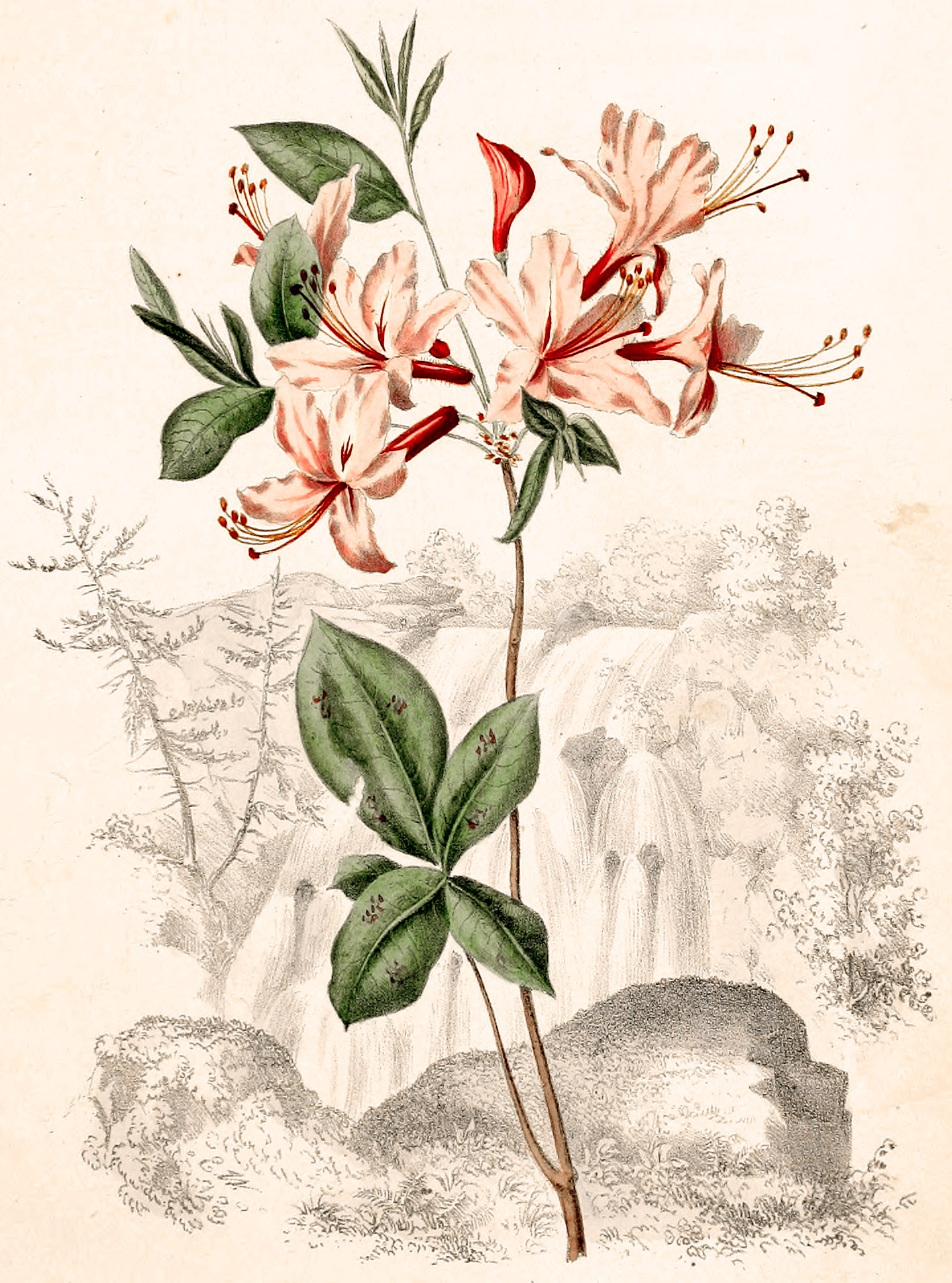Azalia Nudiflora

Linn. Class, Pentandria; Order Monogyria. Natural Order, Rhodoracea.
by Emma EmburyTHIS is one of the most beautiful flowers to be found in American woods, and though generally termed the Wild Honeysuckle, is well known by its Dutch name of the “Pinxter Blumache.” It is a shrub, and grows sometimes to the height of five and six feet, though seldom exceeding two or three. It delights in dry, sandy situations near the margin of woods, and may be seen in full flower early in the month of May. There are many varieties of this plant, some flowering as late as the month of July. Nearly all of them are more or less fragrant, though the Azalia Nitida, or Swamp Honeysuckle, exceeds in sweetness all others of the species.
The Azalia has a calyx five parted; corolla tubular, half fivecleft; stamens on the receptacle; stigma declined obtuse; capsule five-celled; five-valved, opening at the top; leaves Ian ceo late-oblong or oval, smooth or pubescent; flowers abundant, viscous; their stamens longer than their divisions; teeth of the calyx short, sub-rounded; stamens very much exsert.
The view attached to this plate, is one of the Upper Fall on the Buttermilk Creek, a small stream which issues from a mountain-lake about four miles east of the Susquehannah, into which it falls, about ten miles below Tunkhannok, Wyoming County, Pennsylvania. The country around is wild and but thinly settled. A small village stands at the mouth of the creek, containing some flour mills and a factory, but it is in rather a depressed condition.
See Emma Embury's poem “The Wild Honeysuckle”.